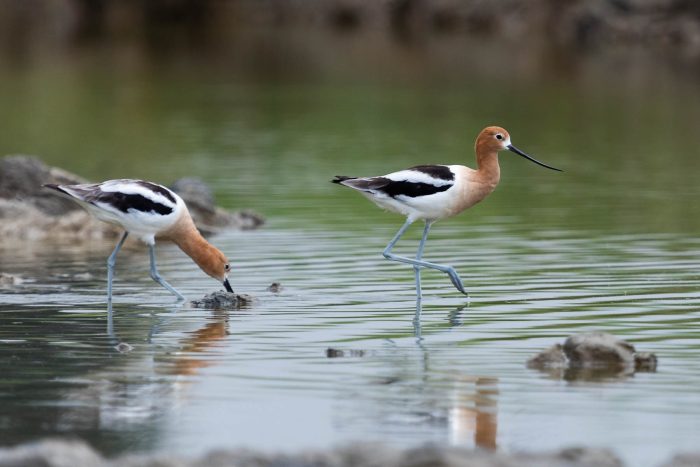American Avocet
Recurvirostra americana
The American avocet is a medium sized bird with a rust-colored head, upturned bill and long legs. It lives in open areas with little vegetation and shallow waters, and can be found throughout the Chesapeake Bay watershed during the winter months.

